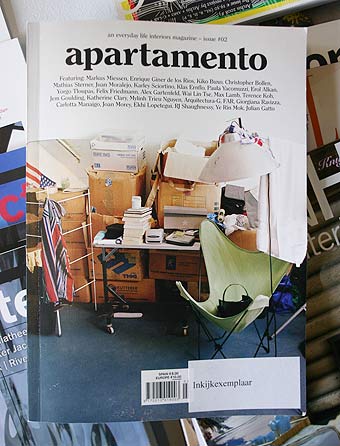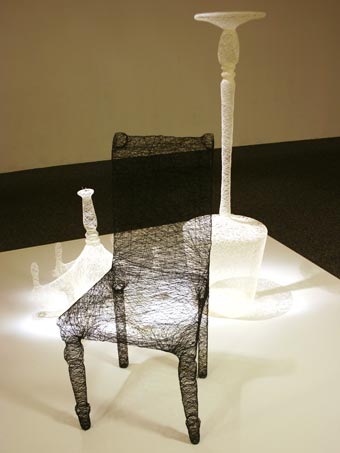I am kinda into chairs at the moment because I have to write my bachelor thesis and as I like chairs a lot I choose for them as the main topic…
so the arched gallery in the nai, netherlands architecture institute, maastricht is showing an installation called ‘living with things’ by rotterdam-based architect rianne makkink & designer jurgen bey. the creative duo evoke the industrial hall, where they lived until recently, in the 3th level of the institute – a space that they regarded as the ideal house.
this chair is a little detail of the hole exhibition and one of my favorites. I like the combination of seating object and private space. armchair in a box. and when you sit inside you look through a tv window and you can observe whats going on outside. the only disruptive element are the black stickers on the box.














